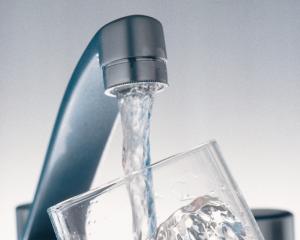
Nearly 35 years after France thumbed its nose at world opinion and conducted a series of nuclear tests on Mururoa Atoll in the South Pacific, David Barber's view has not changed.
It was a fundamentally wrong thing for France to do and nothing since had altered that opinion, Barber said.
His reporting of the crimson red nuclear bomb cloud which rose over Mururoa at 8am on July 21, 1973 flashed around the world. On the world news stage it was the biggest story of the time.
For Barber it was the highlight of 50 years of reporting - a career which included the Vietnam War.
It was also the first government-sponsored nuclear protest by any country.
The frigate Otago had three weeks earlier sailed from Devonport naval base in Auckland, on the orders of Prime Minister Norman Kirk. Labour cabinet minister Fraser Coleman and two journalists were on board.
At the time Mr Kirk said the voyage was to publicise what was happening in "this remote part of the world so as to stimulate world opinion still further and attract wider support for the rights of small nations".
Otago was not going to try to stop the tests, nor would the ship or its crew be put in any danger. The voyage was intended to put the French in the harsh, unremitting glare of the international spotlight, Barber says, in a new book by Gerry Wright, an officer on Otago.
The book, Mururoa Protest, was launched at the Napier RSA last weekend.
For Barber the voyage came very close to being aborted well before the frigate sailed. His coverage of the Vietnam War as an NZPA reporter had upset some in the defence forces and the message was sent to Mr Kirk's office that "Barber wasn't acceptable".
Mr Kirk's office gave the message to NZPA, but the response was swift and uncompromising from John Hardingham, then the editor of the New Zealand Herald and the chairman of NZPA.
"Hardingham said the Government doesn't decide who NZPA sends on this assignment and if Barber doesn't go then no-one from NZPA will go."
For Mr Kirk the mission was a publicity exercise. He wanted world coverage and without NZPA he knew he might not get it.
Defence chiefs were told by the prime minister's office Barber would go, no debate.
As the ship was about to depart, defence minister Arthur Faulkner told Barber the Government had every confidence he would do an honest job.
After several weeks at sea Otago was only 21 nautical miles from the atoll when the French exploded a nuclear bomb in the atmosphere, slung beneath a large balloon.
Barber said he and New Zealand Broadcasting Corporation journalist Shaun Brown and television cameraman Wayne Williams, were on the bridge of Otago, but he had no fear they were putting themselves in danger from radiation fallout.
The ship had sent up weather balloons and knew which way the wind was blowing. The protest frigate was in the best place.
"I never felt we were ever going to be in any danger because the French didn't want us to be in any danger either. If the wind had suddenly turned I guess we would have gone like bats out of hell to get out of the way," he said.
From the bridge Barber watched the blast.
He wrote at the time that "after the initial flash an orange-red fireball erupted through a layer of cirro-cumulus cloud over Mururoa, spreading out about 1200 feet across and burning at an estimated 46 million degrees Centigrade at its centre."
"The expected mushroom cloud then began to form, rising to 10,000 feet in the sky. It developed a perfect mushroom shape, quite round at the top after five minutes, but two minutes later began to break up and drift away in the atmosphere."
The story was on front pages around the world.
While most of the ship's company was inside the ship when the explosion happened, operations officer Lieutenant Commander Gerry Wright's task was to measure the size of the mushroom cloud and determine the yield.
Standing in the door of the ship's operations room he used a sextant to measure the height and width of the cloud and estimated it had a yield of 5.4 kilotons, about half the size of the bomb dropped by the United States of America on Hiroshima, Japan, during World War 2.
He said they never felt at risk. The ship was fitted with a wash-down system which washed all the upper decks if they had sailed through a radiation cloud.
It was also fitted with "very, very good" radiation detection gear from the National Radiation Laboratory. In case of a major emergency, medical assistance was available from the French.
He said like all the crew on both frigates, Otago and Canterbury, which relieved Otago, they were doing their job and following orders.
Mr Wright, a naval veteran who witnessed the British nuclear tests at Christmas Island in 1957, said sending a warship to protest at another country's bomb tests was "mind-boggling".
"The whole world just went ape," he said.













